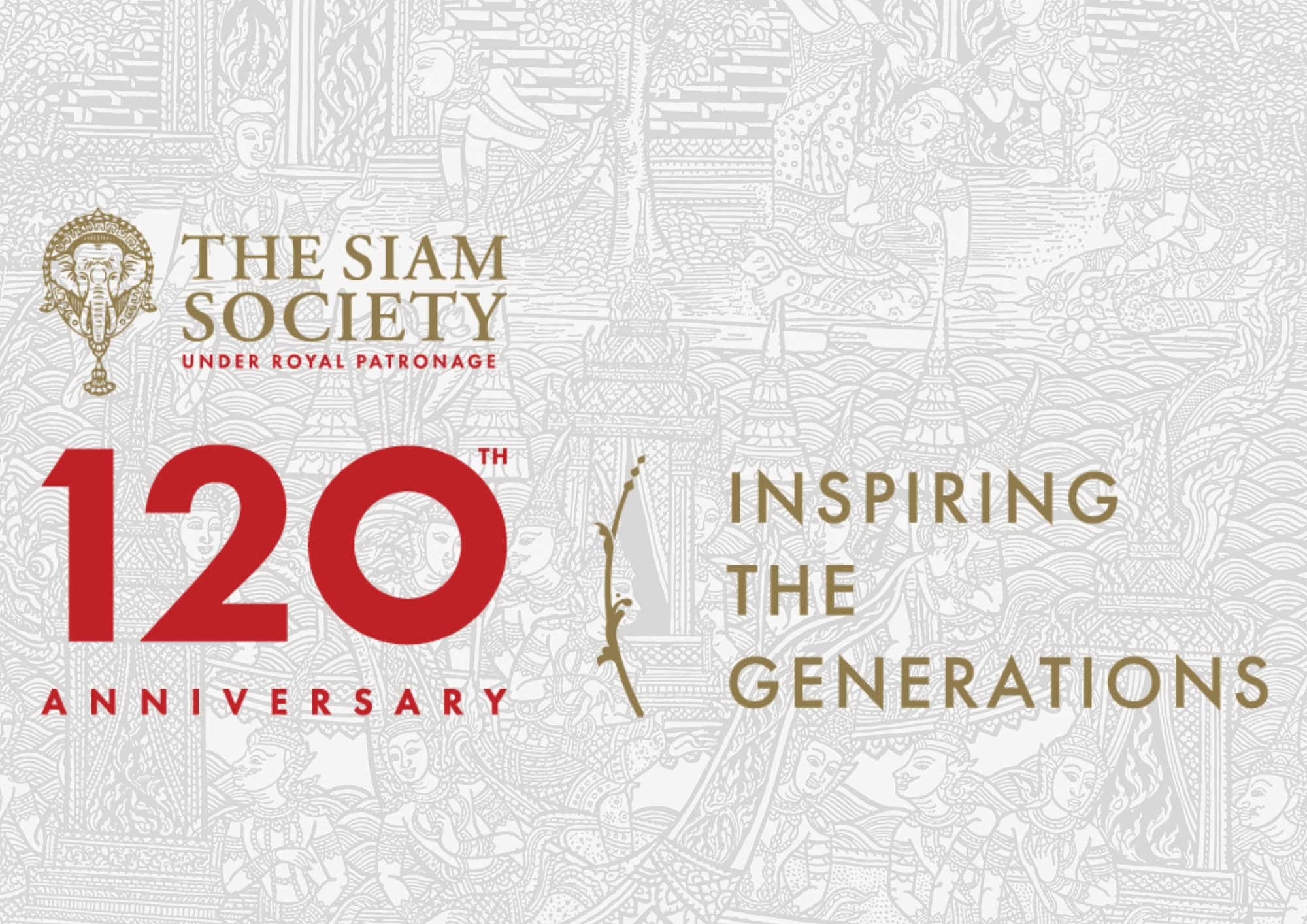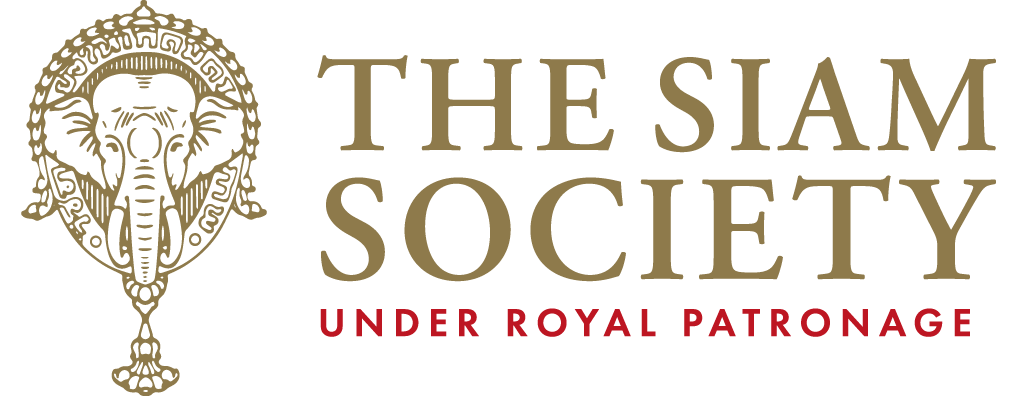
The Acanthus Leaf in The Siam Society’s 120th Anniversary logo

Ancient Greek Corinthian capital from the tholos at Epidaurus, Archaeological Museum of Epidaurus, Greece
หัวเสาคอรินเทียนของกรีกโบราณจากอาคารกรีกโบราณของเมือง Epidaurus ที่ Archaeological Museum of Epidaurus ประเทศกรีซ
Photo credit: https://en.wikipedia.org/wiki/Acanthus_(ornament)#/media/File:Corinthian_capital,_AM_of_Epidauros,_202545.jpg
If you look closely at The Siam Society’s 120th Anniversary logo, you might notice a leaf pattern that has also been featured in many of our communications materials. This pattern was inspired by the pattern of the Acanthus leaf.
The acanthus ornament appears extensively in the capitals of the Corinthian and Composite orders. It was believed that this architectural tradition that resembles leaves from the Mediterranean species of the Acanthus genus of plants was invented by the Greeks. The Acanthus leaf motif in Thai architecture initially emerged during the Ayutthaya period and has been found in several works of art created during King Narai the Great’s reign when Ayutthaya developed strong ties with Western countries.
The Acanthus leaf motif has been widely adapted into Thai architectural tradition and its popularity has persisted until the Rattanakosin period due to the maintained relations between Siam and Western nations. The pattern of the Acanthus leaf in our logo can truly represent The Siam Society, a Thai cultural organisation with an international scope that will continue to be the hub of knowledge-sharing among both Thai and foreign lifelong learners.
 Old photo of the gable Wat Tawed in Phra Nakhon Si Ayutthaya. Taken around 1996
Old photo of the gable Wat Tawed in Phra Nakhon Si Ayutthaya. Taken around 1996
ภาพถ่ายเก่าของหน้าบันวัดเตว็ด จังหวัดพระนครศรีอยุธยา ประมาณปี พ.ศ. 2509
Photo credit: Fine Arts Department
หากท่านลองสังเกตในโลโก้ครบรอบ 120 ปี ของสยามสมาคมฯ ท่านอาจจะเห็นลวดลายเครือเถาที่ประดับอยู่ ลายนี้ยังปรากฏอยู่ตามสื่อประชาสัมพันธ์ชิ้นอื่นๆ ของสยามสมาคมฯ อีกด้วย ซึ่งลายเครือเถานี้ได้รับแรงบันดาลใจในการออกแบบมาจากลวดลายใบอะแคนตัส
ลวดลายใบอะแคนตัสเป็นลวดลายที่นิยมประดับตกแต่งบริเวณหัวเสา ซึ่งสันนิษฐานว่าชาวกรีกเป็นผู้ประดิษฐ์ลวดลายนี้ขึ้นมาจากใบอะแคนตัสในธรรมชาติ การตกแต่งสถาปัตยกรรมของไทยด้วยลวดลายใบอะแคนตัสปรากฏครั้งแรกสมัยอยุธยา พบมากในงานศิลปกรรมที่สร้างขึ้นในรัชสมัยสมเด็จพระนารายณ์มหาราช เนื่องจากเป็นช่วงเวลาที่มีการติดต่อกับชาติตะวันตกอย่างใกล้ชิด
ลวดลายนี้ยังคงรับความนิยม และถูกนำไปประยุกต์ใช้ตกแต่งในงานศิลปกรรมต่างๆ ของไทยอย่างแพร่หลายมาจนถึงสมัยรัตนโกสินทร์ สืบเนื่องจากความสัมพันธ์ของไทยกับตะวันตกที่ยังคงดำเนินต่อมา ลวดลายใบอะแคนตัสนี้จึงสะท้อนตัวตนของสยามสมาคมฯ องค์กรวัฒนธรรมไทยที่มีขอบเขตในระดับสากล ที่ยังคงเป็นศูนย์กลางการแบ่งปันความรู้ระหว่างผู้ที่สนใจทั้งชาวไทยและชาวต่างชาติ

Western-styled columns at the ubosot of Wat Bowonniwet Vihara
เสาแบบตะวันตกของพระอุโบสถ วัดบวรนิเวศวิหาร
